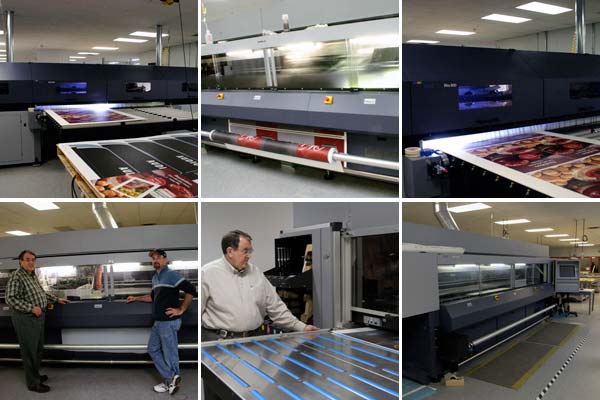(In February, Marty Kauls published the following post on the Graphic Systems blog. He has given us permission to reprint it here as part of our discussion of PrintUV and UV printing.)

A few weeks ago, I came across Darren Gapen’s blog post
UV Printing: Can You Afford Not to Make the Investment? on his blog on the
PIWorld site. In his post, Mr. Gapen pondered the question of purchasing UV printing equipment and asked if printers could afford to not take the UV printing plunge. His blog post resonated with me because we were faced with those same questions nine years ago.
In 2001, we were primarily known in the printing industry as a large-format photographic printer. We were printing with Durst Lambda digital photographic printers in addition to traditional photographic printing with negatives and enlargers. The industry at that time was in a in a state of flux – it seemed like our niche was going to move towards ink jet based printing, but we were not sure if it would settle on solvent or UV inks. In a fortunate stroke of serendipity,
Durst informed us that they would be introducing their first UV digital screen printing press – the
Rho 160. We were able to get a preview and see some samples produced by this machine. We were impressed enough to take the plunge – we purchased one of the first Rho 160s in the US.
It took us several weeks to get the Rho 160 integrated into our production flow, but once we did, it slowly but surely began to change our business – for the better. We could now offer our clients new products and services produced more efficiently and economically. As we began to experiment with the Rho, we began to realize that we could also begin producing brand new products as well. We installed two more Rho 160s within six months of our first installation. Over the next few years, we added two
Rho 351s, a
Rho 600, and two
Rho 800s. We are now running seven UV digital screen-printing machines around the clock.
Adding UV digital screen-printing capabilities was more than just a good move for us – it was transformative. UV printing allowed us to enter markets that had previously been closed off from us, in addition to giving us a whole new set of products to offer our clients. We went from competing against other photographic printers to contending against screen printers. Most importantly, UV printing helped us move into the realm of green printing. A quick word on the environmental benefits of UV printing:
UV inks are environmentally friendly because UV ink printers don’t emit volatile organic carbon compounds (VOCs). VOCs are emitted by traditional solvent-based screen printing inks. UV inks have three major green benefits:
- UV inks are healthier for the employees working around these machines.
- UV inks use less energy to print, because the ink is dried as it is printed – the inks do not require the lengthy drying period that solvent-based inks do.
- UV ink is easily liberated from the substrate when the substrate is pulped; it does not permanently stain the substrate fibers (like traditional printing does), allowing for better greater yield with material recycling.
Reading Mr. Gapen’s post reminded me how far we have come in the last nine years. In reflection, I think that had we not jumped into the UV screen-printing pool, our business would be struggling or we would be out of business completely. With that in mind, I do not know how any large-format printing company could not afford to add UV printing to their repertoire. I understand that each company’s circumstance is different, but for Graphic Systems, the advent of UV printing was a significant game changer as the move from traditional photographic printing to digital photographic printing. For us, there is no going back. We wouldn’t want to.














